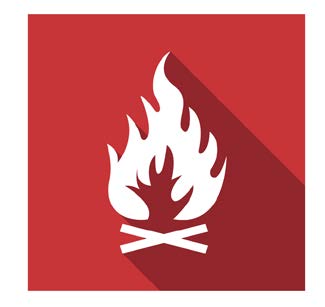How Does Your Loss Experience Compare?
I am often asked this question by our shop owners, plant manager, or CFO. Some of the shop owners/managers have an inkling of whether they’re better than average, average, or have loss challenges. However, their specific knowledge of other shops is usually vague at best.
I often start my response to this type of question with information on how general insurance industry and MTMIC losses overall are trending. I then move to individual company experience modifications as a specific company indicator. I state, IN GENERAL, an experience mod above 1.00 says your experience is worse than average. IN GENERAL, an experience modification below 1.00 tells me that your experience is better than average. I say IN GENERAL because an experience modification that is above 1.00 because of one loss is different in my mind than an experience mod above 1.00 caused by multiple losses year after year.
An experience mod of 1.00 is meant to be the guidepost of what losses are expected to be given a company’s payroll and classification. So, losses above that expected amount will cause a mod above 1.00 and if your losses are better than what was expected, then the experience mod will be below 1.00. For comparisons purposes, experience modifications we have at MTMIC range from a low of .57 to a high of $3.09. That is, a firm with a $2 rate and an experience mod of .57, their effective workers compensation rate is 1.14. For the shop with an experience modification of $3.09 is, their effective workers compensation rate is $6.18. A significant difference for these shop’s overhead costs.
Sometimes global numbers are helpful, so we took a looked at the track of the experience mods in 2016 compared to 2015. In 2016, 51% of experience mods have decreased. That is, the customer’s loss experience is improving. 26% of 2016 experience modifications are the same and 23% have increased (i.e. member experience has deteriorated).
As you know, we have three field loss control representatives. They are assigned about 270 accounts each. That allows them to spend significant time helping MTMIC members get the best loss control results. I, again, am volunteering them to help you any way we can to reduce your loss frequency. A reduced loss frequency is good for your employees, good for your shop and its costs of workers comp, and also good for MTMIC.
Call me anytime I can help you.











 As the winter months are upon us, so is the use of furnaces, personal heaters, propane heaters and a plethora of other heating devices. These heating devices can often cause safety concerns, especially those regarding
As the winter months are upon us, so is the use of furnaces, personal heaters, propane heaters and a plethora of other heating devices. These heating devices can often cause safety concerns, especially those regarding





 Once a Workers’ Compensation claim is turned in to our office, we take the reins and take control, attempting to minimize all the costs involved, the length of disability, and to assure a successful return of the injured worker to productivity. Everyone benefits. But, as an employer, there are things that you can do to help mitigate the expenses or costs on the claim.
Once a Workers’ Compensation claim is turned in to our office, we take the reins and take control, attempting to minimize all the costs involved, the length of disability, and to assure a successful return of the injured worker to productivity. Everyone benefits. But, as an employer, there are things that you can do to help mitigate the expenses or costs on the claim. Through a review of the lacerations within MTMIC’s loss run history, the issue of laceration injuries is very apparent. Since 2009, 2,091, or 25% of the total 8,536 injury claims reported have been lacerations. Of those 2,091 laceration claims, 1,508, or 72%, were reported to have taken place on the hand (fingers, thumbs) of the injured employee.
Through a review of the lacerations within MTMIC’s loss run history, the issue of laceration injuries is very apparent. Since 2009, 2,091, or 25% of the total 8,536 injury claims reported have been lacerations. Of those 2,091 laceration claims, 1,508, or 72%, were reported to have taken place on the hand (fingers, thumbs) of the injured employee. By Ruth Kiefer, ARM Loss Control Manager
By Ruth Kiefer, ARM Loss Control Manager